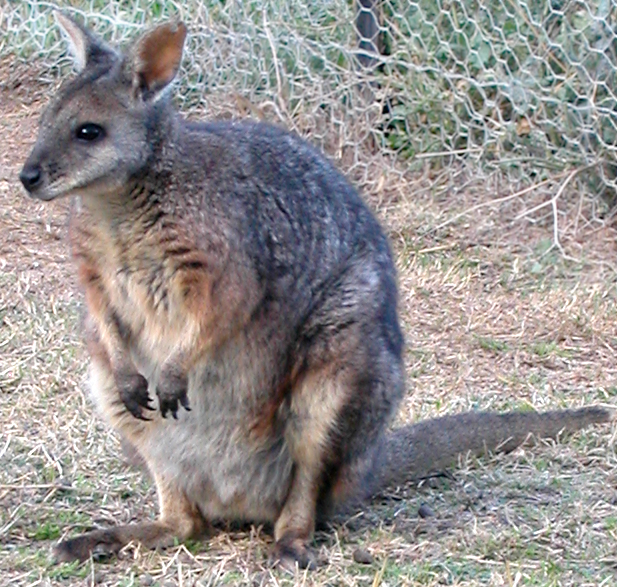BAMZ Welcomes Three New Tammar Wallabies
The Bermuda Aquarium, Museum, and Zoo [BAMZ] recently acquired three wild Tammar Wallabies, including two males and a female, all in an effort to help New Zealand to control the population of the species in that country.
The BAMZ newsletter said, “Our three new Tammar Wallabies were part of a population control effort in New Zealand; we just love it when new animals come to BAMZ to make their home.
“Also known as the dama or darma wallaby, it is native to south and western Australia, however it was introduced to New Zealand in the 1870s, where it is now seen as a pest. The wallabies at BAMZ were part of a population control effort in New Zealand, where their foraging has negatively impacted agricultural areas and indigenous plants.”
An example of a Tammar Wallaby
“These are actually wild born animals,” explained Patrick Talbot, Curator for the Aquarium and Zoo. “An agreement was made with the New Zealand government and zoos in America to acquire about 100 animals, and we jumped on that bandwagon.”
“The wallabies were first transported to the United States and kept in quarantine for 30 days, before being transferred to Bermuda, where they have undergone a further period of quarantine.
“Tammar wallabies are one of the smallest wallaby species. They are about the size of a rabbit, and they are mostly grey. Adults have a head and body length of 24-26 inches, with a tail that is usually 15-17 inches. They stand about 14-18 inches tall. Adult males typically weigh about 15 pounds, while females are about 10 pounds.”
Read More About
Category: All, Environment



It’s human population that needs control, poor little things, captured and removed from their natural habitat by humans who feel they have more rights than the creatures they displace, subjected to intrusive testing, sedated caged and transported to a strange land to reside in a tiny cage for the amusement of more humans.